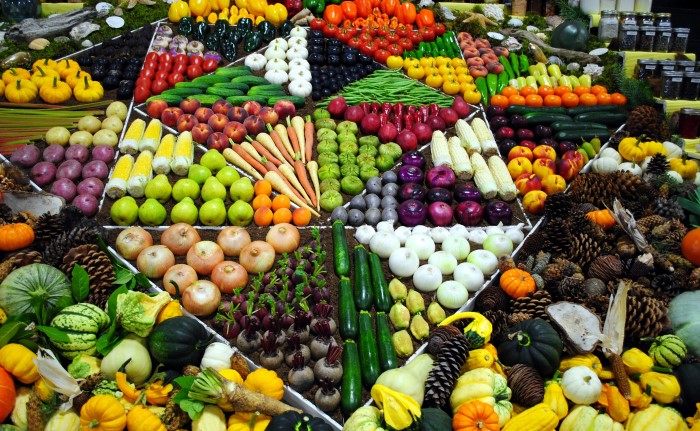Do you go grocery shopping with your family? If you do, then chances are that you're used to seeing a lot of the same sights, week in, week out. Especially in the produce aisles, which tend to be at the front of the shop.
The berries are here. The bright shiny peppers over there. Rows of lush lettuce and kale and other greens.
But as delicious as these things are, when it's the middle of January in Canada and you traveled through four inches of snow just to get to the store, it is worth asking: "How did all of this fresh produce get here?"
The answer is that it was flown from locations all around the world. Avocados from Mexico. Blueberries from Peru. After all, it's always warm and sunny somewhere on Earth!
This distance that food travels to reach our stores and plates has a name. It is called 'food miles'. And a new study out of the University of Sydney, Australia has broken down exactly how much food miles add to the world's carbon emissions. It is a lot.
Food miles by the numbers
Airplanes add a lot to food miles. (Getty Embed)
In total, the food we eat produces about 30 percent of the world's carbon emissions. That includes land use (including how carbon-munching forests are cut down to make space for other crops and livestock), the production of food, and more.
Of that amount, the study found that 19 percent comes down to food miles. In other words, this is about six percent of the world's total carbon emissions.
Depending on how you look at it, that might not sound like a lot. Six is a pretty small number, right? But when you think about how much carbon we're emitting each year, six percent of that is a lot of greenhouse gas.
The lead author of the study, Dr. Mengyu Li, said: “Food transport—at around six percent—is a sizeable proportion of overall emissions. Food transport emissions add up to nearly half of direct emissions from road vehicles.”
Wealthy countries lead
The produce section in your store is often a mix of local produce plus food from the other side of the world. (Getty Embed)
Not surprisingly, countries with the largest populations—Russia, India, China, and the US—create the most food miles emissions.
But the study also found that wealthier countries created far more food emissions per person than other nations. Despite having just 12.5 percent of the world's people, countries like the United States, Japan, Germany, and France created 46 percent of the food miles. That's almost half that is used to feed less than a sixth of the world.
This makes sense, since getting to have fresh strawberries and bell peppers in the dead of winter is quite a luxury. The hidden cost of that luxury is all of the fuel and energy used on planes, trains, ships, and trucks to get it from the farm to the market.
Eating local matters
In the last few years, many people have shifted to a more plant-based diet. One of the main reasons? Because all of those fields of livestock—cattle and pigs especially—produces tonnes of methane each year, one of the worst greenhouse gases.
This is still true, but the authors of this study say that switching to a diet with more plants is just part of the solution. It still matters where those plants are coming from.
Another of the study's authors, Professor David Raubenheimer, wrote: “Our study shows that in addition to shifting towards a plant-based diet, eating locally is ideal, especially in affluent countries.”
Many ways to change
A farmer's market is the great place to learn about food as you shop. (Getty Embed)
The authors of the study understand that eating local is not always an option. Some places really need food shipped in because growing conditions in their area are poor, even during the best parts of the year.
They say that governments need to invest in more energy efficient transportation vehicles and refrigeration technology. These changes would make each food mile less costly, or produce less emissions.
But overall, the way that we shop will have the biggest effect on changing our relationship with food miles. If people buy less food that is made far from their home—especially citrus, berries, and asparagus in February—the market will change.
If you're curious about what food is actually in season in the area you live in, do some online research with your family. You might come up with some cool recipes while you're at it.
And since we are at the start of summer here in Canada, go check out a local farmer's market and ask some questions. No better person to ask about what is grown near your town than the person who does the growing!
 So much delicious food! But how did it get here? (ID 21116536 © Mlhead | Dreamstime.com)
So much delicious food! But how did it get here? (ID 21116536 © Mlhead | Dreamstime.com)









